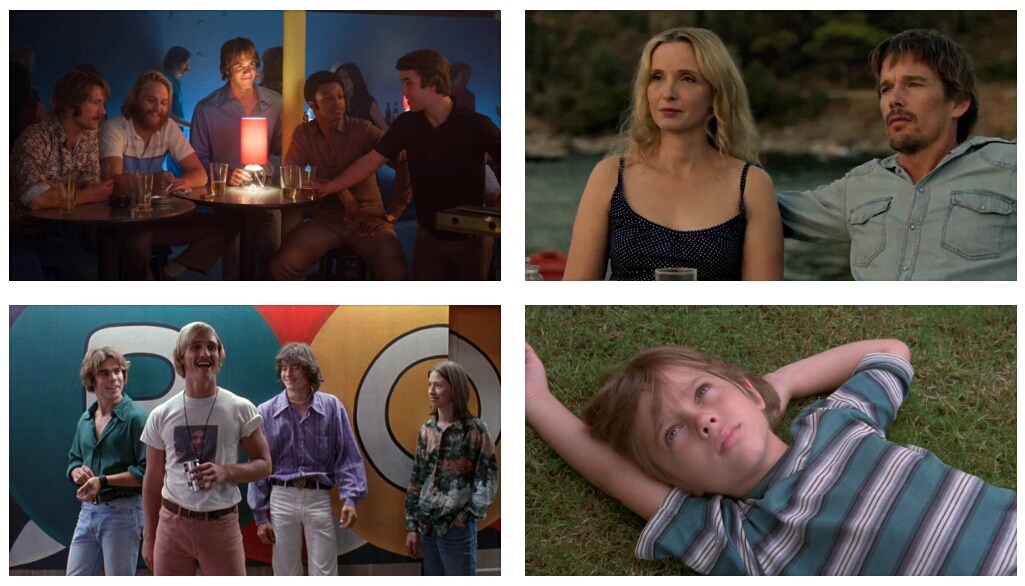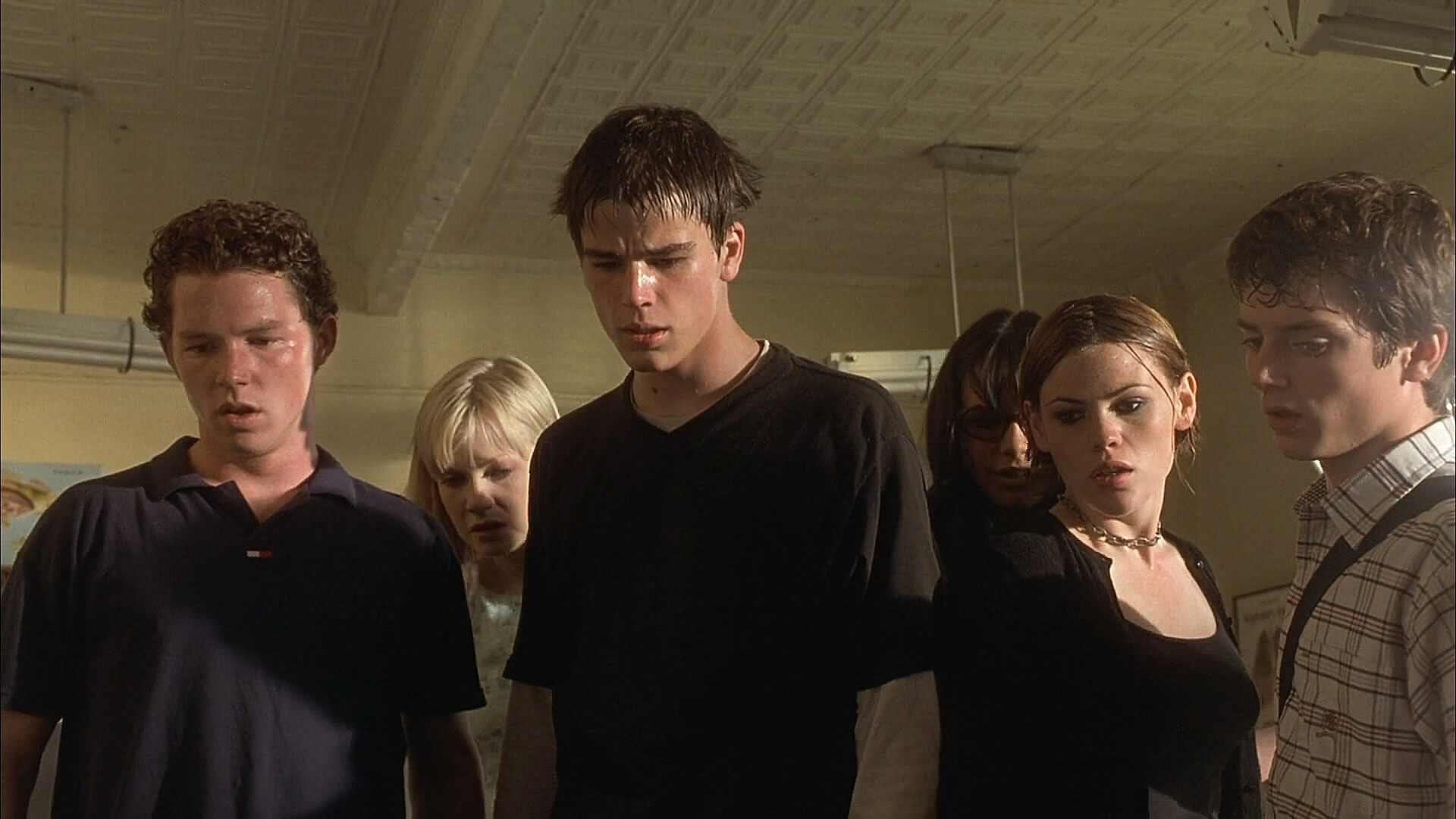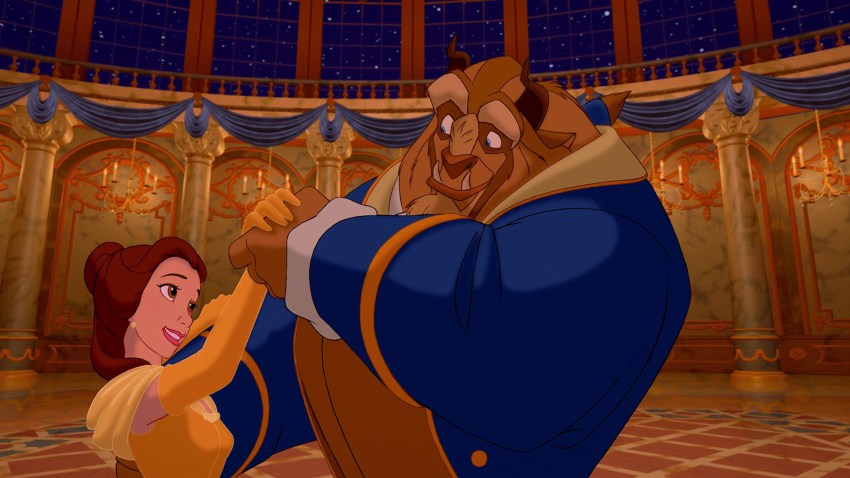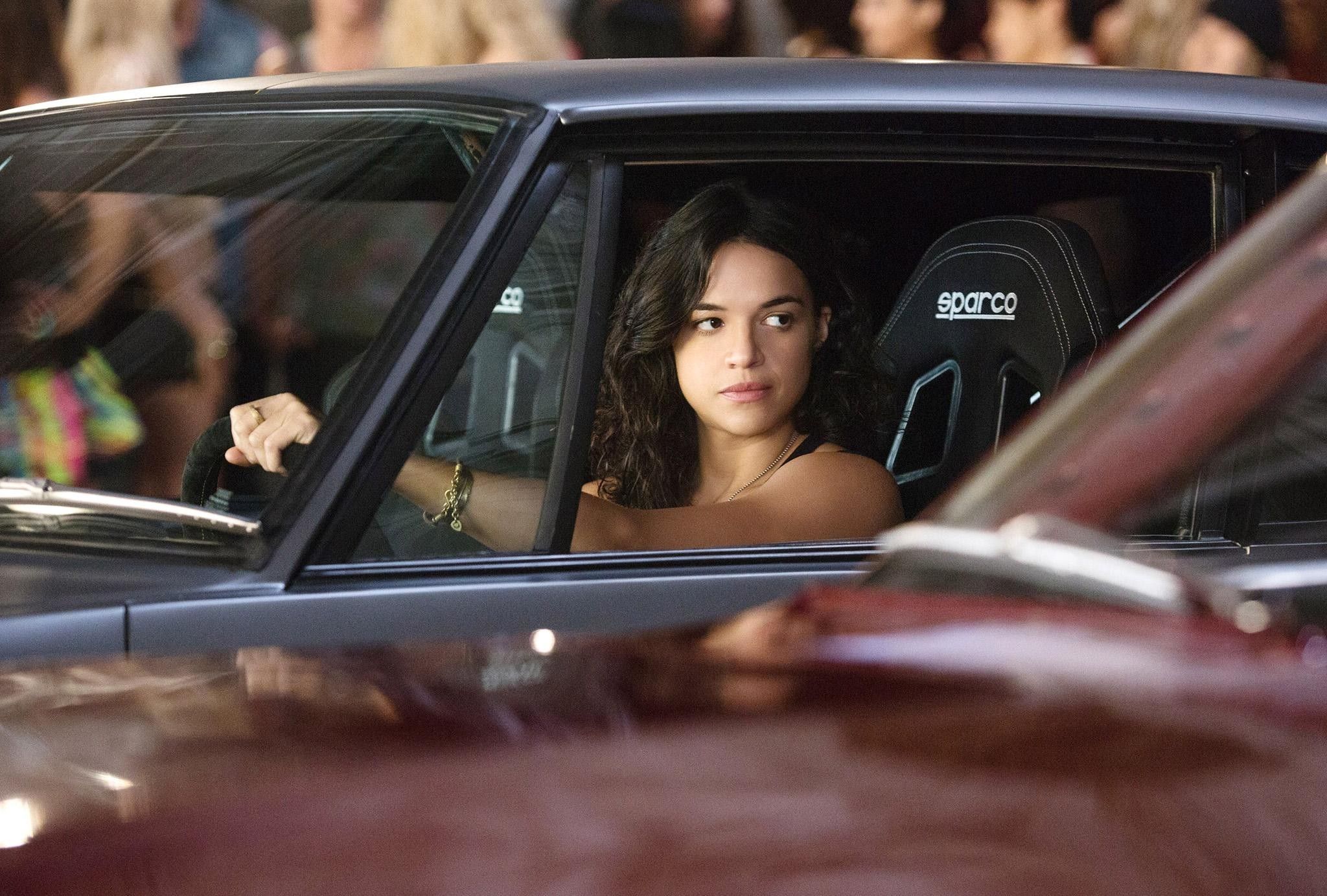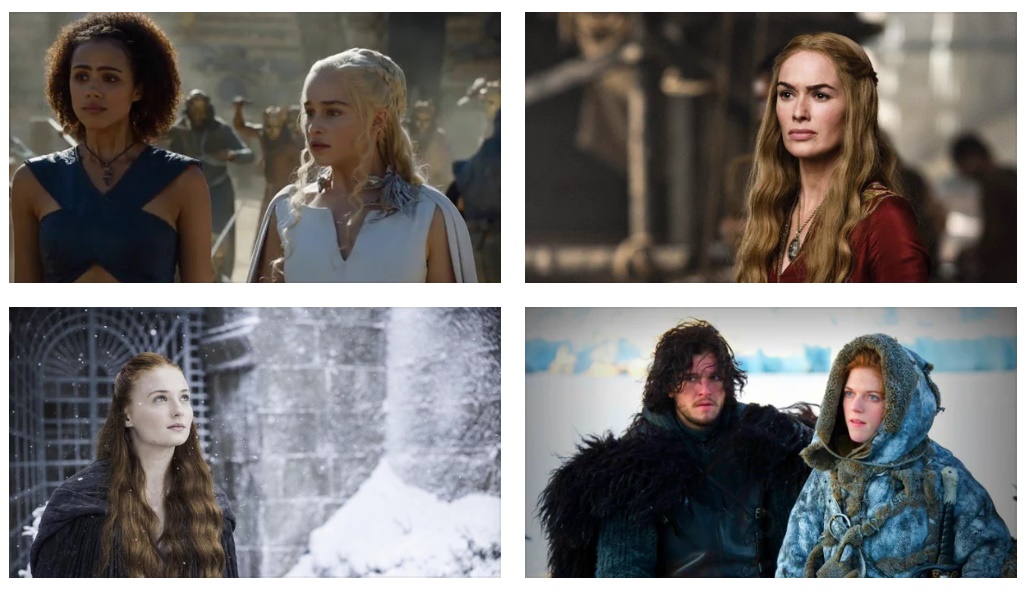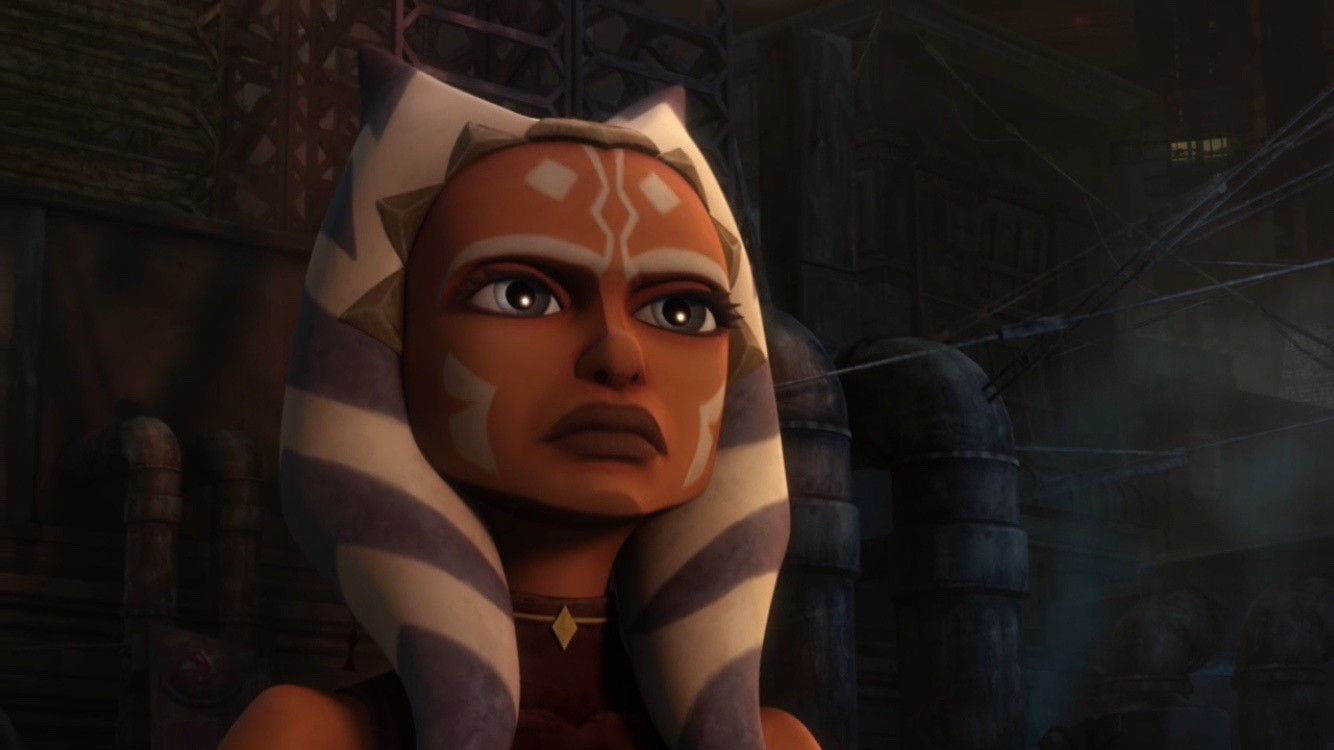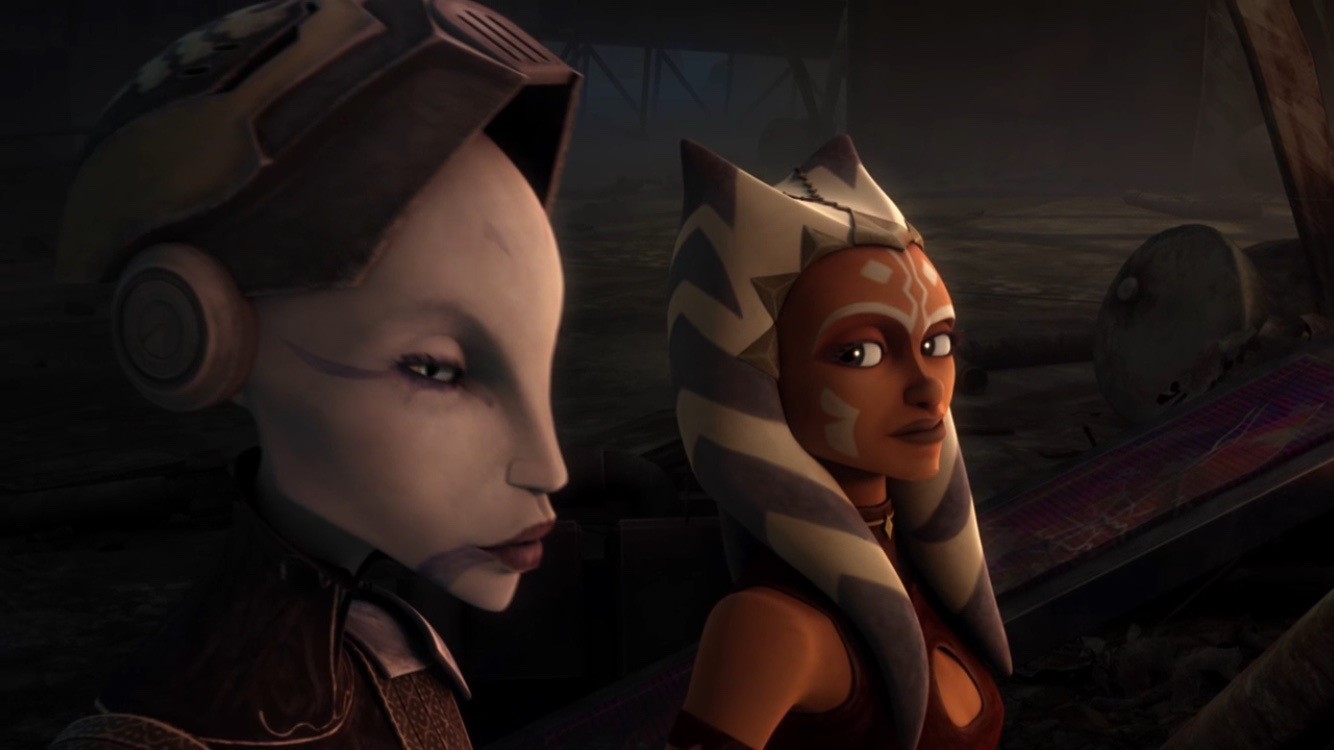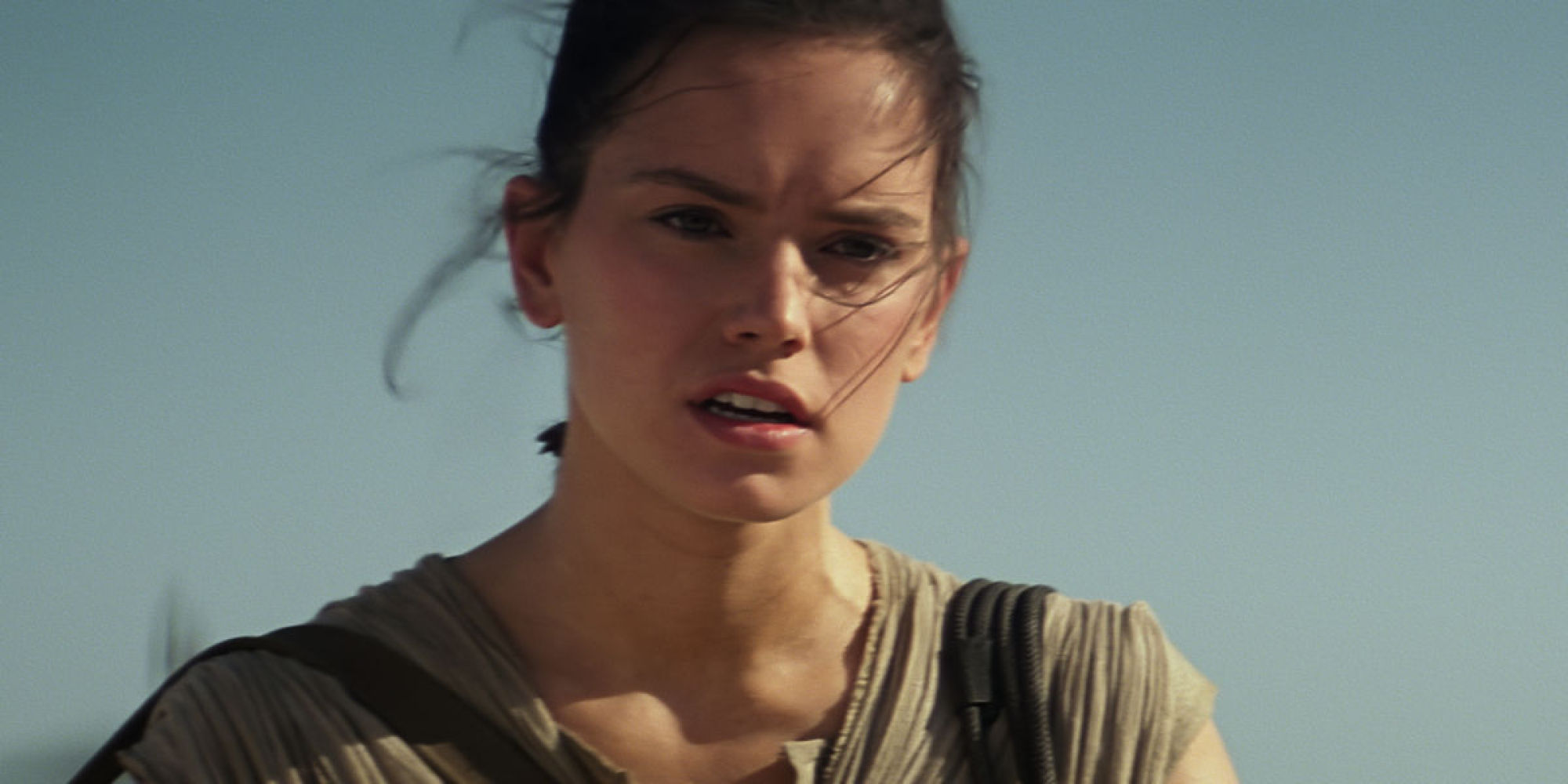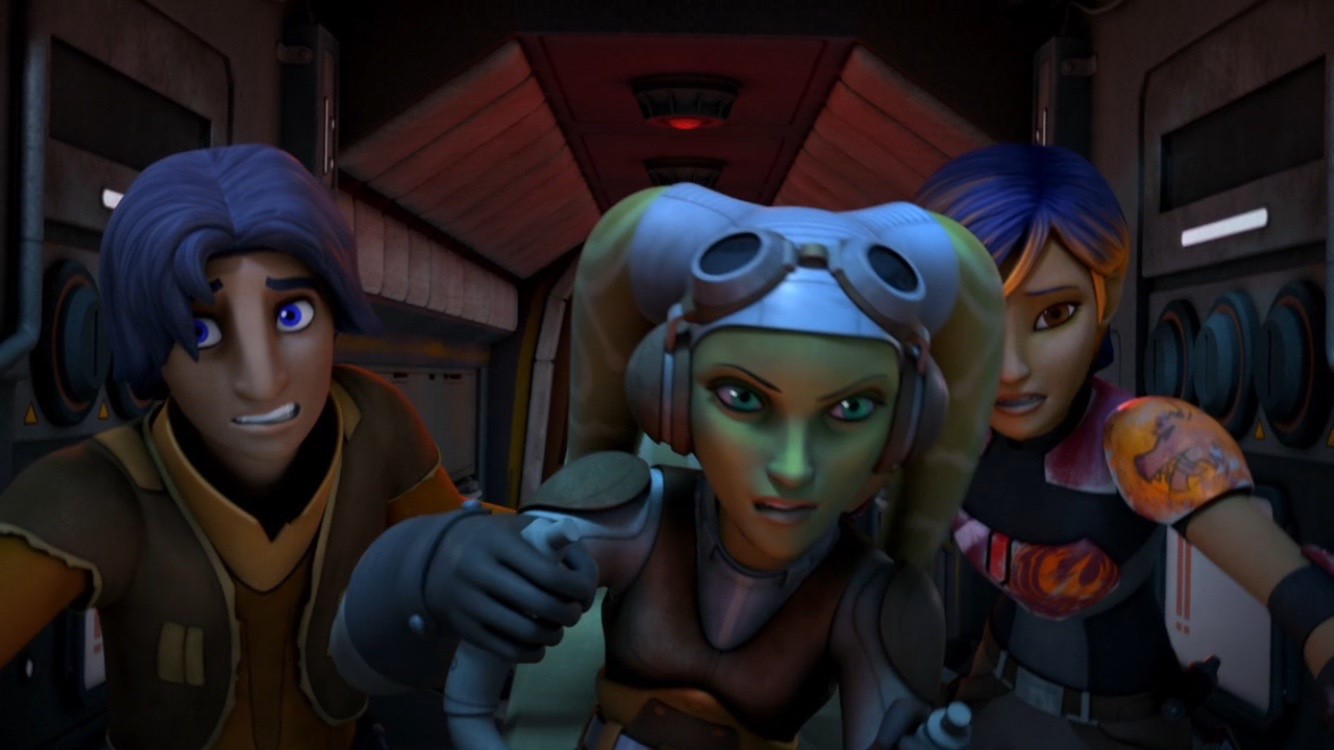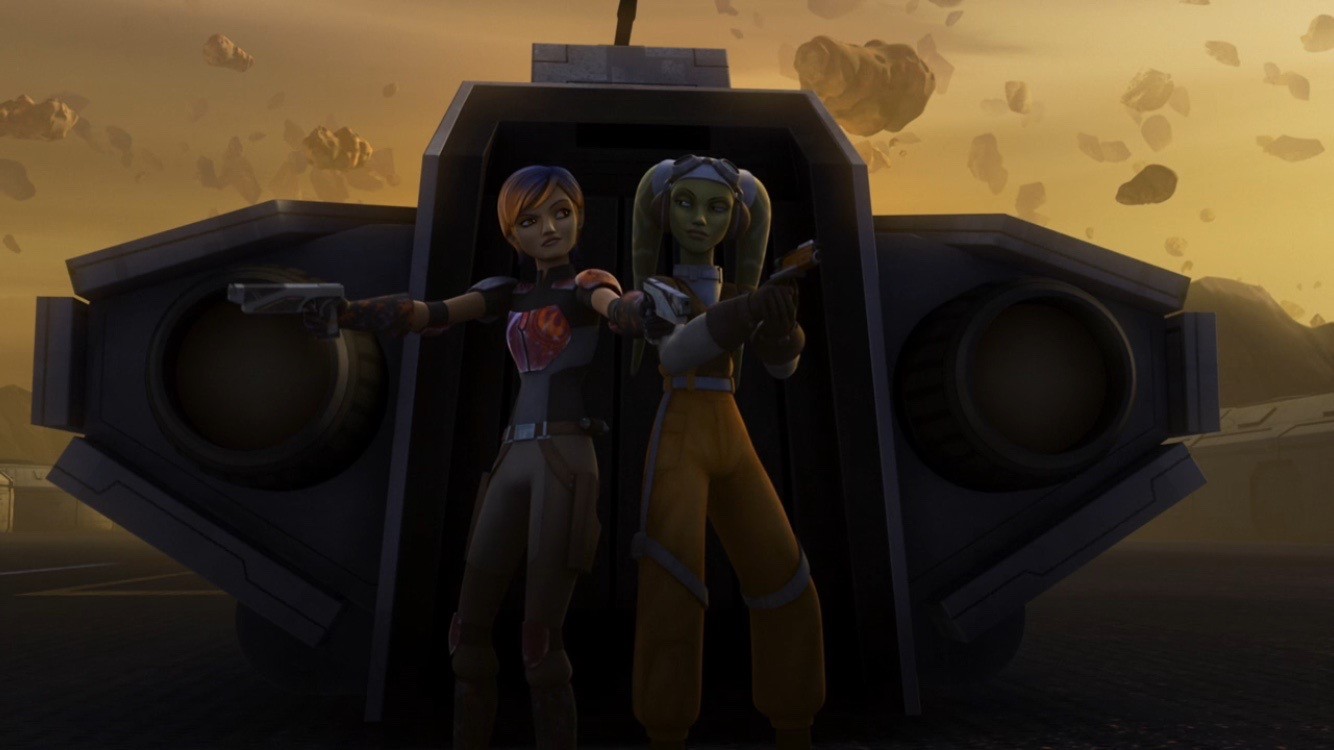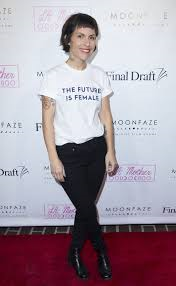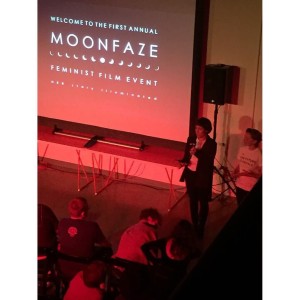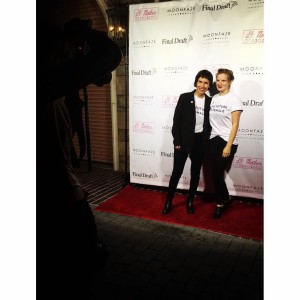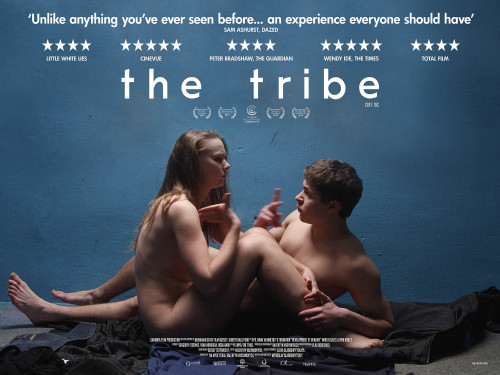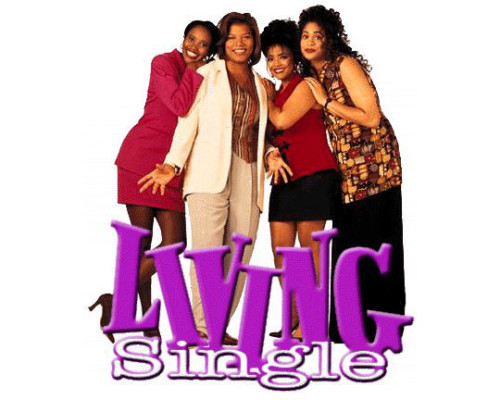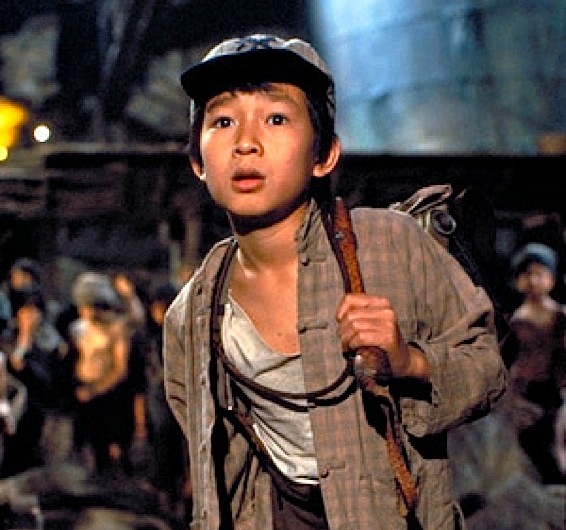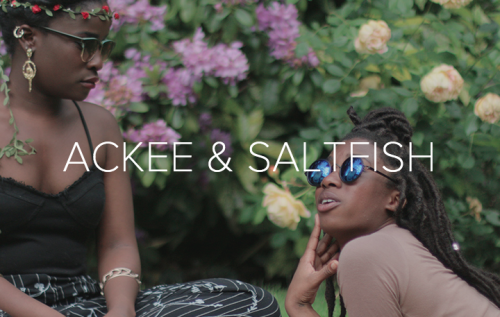This guest post written by Maya Bastian appears as part of our theme week on Unpopular Opinions.
Disappointed. That would be the first way to describe how I felt after walking out of Richard Linklater’s latest release Everybody Wants Some!!, 20 minutes into the film. Disgusted. That was my second response. These feelings quickly turned to outrage as I realized that I had just played witness to the reversion of cultural ideals that has overtaken our society as of late.
Hailed as “achingly perceptive” by Variety and “utopian” by The New York Times, Linklater himself refers to the film as a “spiritual sequel” to his earlier nostalgia-laden hit Dazed and Confused. In reality, it’s an intensely sophomoric and outdated romp through the lives of five college jocks who bandy around, seducing girls, and partying until they drop. The male protagonists refer to women as “bitches” when they get rejected and intelligent women are thought of as “dykes.” Set in 1980s Texas, it’s a throwback to Porky’s–era films, where the women are idly brutalized and consent is disregarded several times throughout the course of the movie.
What is astounding is that the glaring misogyny that runs rampant throughout is completely brushed aside by just about every critic. The Guardian gave it a rave review, saying, “The attitudes towards women are unenlightened but the freshman of Linklater’s joyful 80’s campus movie reveal occasional complexity.” RogerEbert.com called it a “gentle film” but I would argue the opposite. There is nothing gentle about flouting consent and flaunting camera angles that are meant to denigrate the female form.
The disappointing part is that I’ve been a fan of Linklater’s films for some time, excited by his subversion of narrative techniques and his bold commitment to strong characters that buck the status quo. Waking Life was startlingly moving and profound. Tape was cinematic genius in its execution.
On the surface, a lot of his female characters reflect strong ideals. Sooze (Amie Carey) in Suburbia is a hardcore third-waver and lashes out “angrily” about smashing the patriarchy. The lead female character Amy (Uma Thurman) in Tape presents as a strong woman and an accomplished lawyer. Celine (Julie Delpy) in Before Sunrise and the rest of the Before Trilogy, is intellectual, graceful, and human. Sure, they all seem like feminist role models. But take a deeper look and Linklater’s female characters tell another story: one of a creator deeply obsessed with ignorant male stereotypes and the women that encourage them.
After viewing Everybody Wants Some!!, I had to reassess my devotion to Linklater. It led me to review his earlier titles, only to realize that he is suffering from the classic virgin/whore rhetoric. Every one of his narratives are about male characters running rampant over women’s rights.
Looking back through his films, they all contain this running theme of underdeveloped man-children who are routinely validated in their anti-woman approach. These characters often appear fun and exciting. No one really challenges them on their behavior, most simply laugh it off. A glaring example is Steve Zahn’s character in Suburbia, aptly named Buff. He primarily exists to reflect an attitude that glorifies acting poorly, hurting others, and treating women as objects. Yet no one ever seriously addresses his behavior except for Sooze, the token feminist, who gets quickly shot down by her peers.
While he does include the occasional strong female voice, Linklater tends to tokenize these women. They are often one-note characters who are stereotypes of themselves. Even Celine in the Before Sunrise series falls victim to this pattern. Though she starts off as a thinking, feeling woman with complexity in Before Sunrise, by the end of the series, she has devolved into a bitter, nitpicky wife, treading alongside all of the female “married woman” stereotypes that we fight so hard to deflect and dismantle. In Before Midnight, her character presents as “flat” and one-dimensional, with Linklater adhering to the school of thought that strong, intelligent women are incapable of compromise and empathy.
Linklater marginalizes his female characters in almost every movie that he has made. Tape, while brilliant in its technical prowess, reduces the only female character (Uma Thurman), as an object to be fought over. Dazed and Confused is another glaring instance of hyper-sexualization, where practically every woman lacks definition. The only substantial female character is the nerdy redhead Cynthia (Marissa Ribisi), who ends up being objectified by the much older Wooderson (Matthew McConaughey) in what is considered one of THE classic lines of the film.
As Linklater’s oeuvre evolves, the sidelining of his female characters increases. In School of Rock, the only two adult female characters (Sarah Silverman and Joan Cusack) are both uptight, angry, and only serve as foils to guitarist Dewey Finn’s (Jack Black) brilliant plans. Even in the much lauded Boyhood, we see signs of the director’s tendency to tokenize women. In Linklater’s world, we can only ever be seen on one side of the virgin/whore rhetoric. Either he focuses his camera on our bodies and our loose morals or he martyrs us, as is the case with the long-suffering single mother (Patricia Arquette) in Boyhood. While it’s worth mentioning that Patricia Arquette’s performance is brilliant, it still serves as further proof that Linklater perpetuates male-centric stories where women exist as an afterthought, only putting them front and center when they can fulfill society’s categorization of women into tiny, little boxes.
Which brings us back to his latest effort. Shockingly produced by a woman, Megan Ellison of Zero Dark Thirty fame, Everybody Wants Some!! continues to receive rave reviews. Apparently bro culture has reached its cultural apotheosis.
Salon writer and self-proclaimed feminist, Joanna Novak, even professed that she didn’t see anything wrong with the throwback and glorification of bro culture, though she jokes that looking past the “casual sexism” and enjoying the “bro-centric ideology” might make her a “bad feminist.” But here’s the thing. The longer we as a society continue to glorify boys acting badly, laugh at a bunch of jocks using women and lying to get them into bed, jeer along with them at so called “imperfect” bodies, the longer rape culture will exist and the objectification of women will reign supreme. Why is it so hard to convict a rapist? Perhaps it’s because the media sees handsome, swagger-ful boys as cute and cheeky as opposed to predatory. Perpetuating this social construct of masculinity in a time when we need desperately to dissect it and deflect it instead, is a dangerous path.
While the reviews of this pointless, nostalgia-saturated narrative are shocking, the response isn’t surprising. The current swath of the films’ reviewers are primarily men who seem to be joyfully reliving their youth.
One shining light in this otherwise woeful collection of reviews is Jill Richard’s article in the Los Angeles Review of Books. She delineates that as a culture, we are past the age of Animal House style fraternity. Richard writes:
“If one is a bro, the bro squad looks like a great time. But I suppose I feel like that squad wouldn’t have me as a member, or would rape me, and that makes all the difference. […] …There is no non-sinister defense for the ‘American male birthright’ as a conceptual category.”
On a larger scale, Linklater has not just disappointed me as a filmmaker, but as an artist. We have reached an apex in our society, where art must be a voice for the under-represented. Artists have an obligation to create pieces that speak to the condition of our culture and of the world. The time to laud ego-centric films that glorify the glory days of its maker have passed. We no longer need to see work that makes us laugh but that does not make us think.
During the release of Boyhood, one Los Angeles Times critic refused to pander to the flow of warm reviews. While just about everyone was hailing the film as genius, Kenneth Turan took a solitary stance against the film, amid consternation from fellow critics. What he said rings profoundly true in our age of hyperbole and over-hyped cinema. While he did not end up reviewing the film, he did write an incredibly astute article on the nature of genius and the way our society creates cultural impunity by lauding films that don’t deserve it. Turan writes:
“…The fuss about ‘Boyhood’ emphasized to me how much we live in a culture of hyperbole, how much we yearn to anoint films and call them masterpieces, perhaps to make our own critical lives feel more significant because it allows us to lay claim to having experienced something grand and meaningful.”
As Indiewire‘s Sam Adams writes in response to Turan’s perspective, asserting the need for diverse opinions in film criticism:
“Masterpieces, however, are not made so by unanimous praise, but by careful scrutiny. Criticisms, and the extent to which they illuminate the fascinating imperfections beneath those ‘masterpieces’ surfaces, only make them stronger.”
Turan’s and Adams’ points ring true to many socially conscious ears. Richard Linklater is no longer a genius in my eyes, but simply a talented filmmaker who has achieved success by pandering to societal norms, sadly failing to use his indefatigable intelligence to see through them.
Disappointing at best, destructive and debilitating at worst.
See also at Bitch Flicks:
The Flattening of Celine: How Before Midnight Reduces a Feminist Icon
The One Night Stand That Wasn’t: Before Sunrise and Before Sunset‘s Jesse and Celine
The Bad Mamas of Contemporary Cinema
Maya Bastian is a writer and award-winning filmmaker who focuses on socio-political issues. She sits on the board of Breakthroughs Film Festival, a short film fest championing new generation female filmmakers. Follow her on social media @mayabasti or check out her website for more info: www.mayabastian.com.
